The winner of the Leopold Bloom Art Award 2025: Tamás Dezső
Nominees 2025:
Tamás Dezső
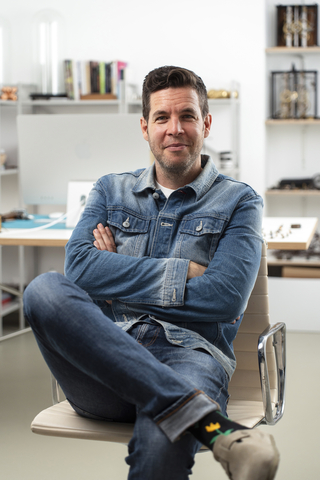
The subject of my work is personal identity and vegetal identity, as well as the human relationship to nature – that is, to the nonhuman. Through a variety of art forms and media – including photographs, sculptures, kinetic works, installations – and with an evolving theoretical background and research, I seek to engage with the pressing questions raised by the ecological crisis.
Each of my works is a problematization, a thought experiment of comparing the fundamental issues of human and vegetal identity, which takes shape through the sensual image or reality of an Azorean forest, a hedge, the world's smallest insect, a piece of a 4.6 billion year old meteorite, 19th century botanical microscope slides or even metronomes.
The work is an attempt to show the end of man's planetary domination, man's blindness to everything that is not him, and the essentially unknown and silent domain of the nonhuman. I explore the traces within the human that connect us to the environment and to vegetal identity, demonstrating that our species is not superior, but merely one among the organic and inorganic entities that constitute the world.
It has become imperative that we approach plant life in accordance with its ontological and ecological significance. Alongside the troubling sense of an ever-deepening delay, we must make serious efforts to understand not only human identity, but also the precarious conditions of vegetal existence – and not merely because our own survival depends on it.
Anna Fabricius
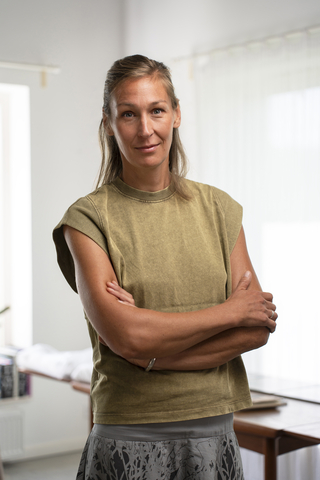
I am engaged in the exploration of social identity and interpersonal global issues, often reflected in individual experiences, which can be articulated in photo, video, and text. I am primarily inspired by socially engaging projects, where a collaborative or participatory creative process plays a key role. Themes such as group identity, the changing nature of work, labour and the representation of global issues through individual life paths occupy my mind. I graduated as a photographer, but I earned my doctorate as a media artist. I didn’t find photography alone complex enough to articulate the issues I wanted to understand and present. Through videos, I can focus on storytelling extended in time, and the personal or individual’s voice based on interviews.
My working method is most characterized by a collaborative approach based on shared play and improvisation, which results in the emergence of hard-to-approach elements and complexities of reality.
Hajas Katinka
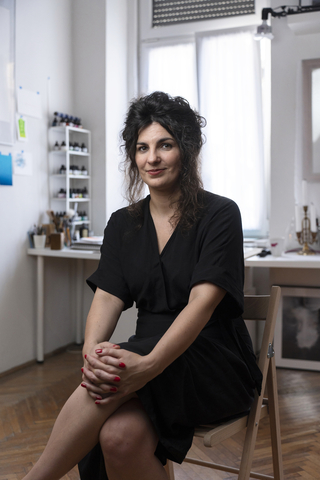
The transformations and fundamental properties of substances, whether insignificant or drastic, are closely linked to the changes in the inner ‘altitude’ of humans. Through external and internal observations, a dialogue emerges between the two worlds, which mutually shapes each other and the work in progress. This dialogue is a bridge for me that finely balances between these two worlds, yet provides a crossing point that allows a new unity to be realised, which reduces the distance between humans and their environment.
In my work, In order to present their unity and to observe them, I aim to capture the essence of these experiences in the most minimalist form, without regard to genres or forms.
Adrian Kiss
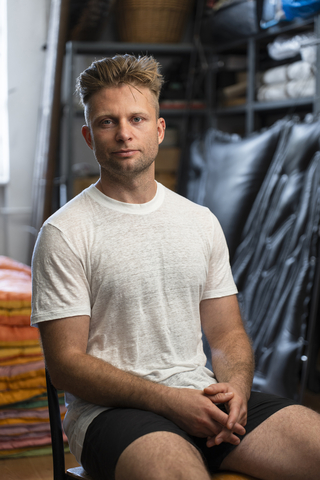
My practice has been rooted in an intuitive relationship with materials, treating them as a safe space and forming the foundation of my artistic language. This familiar space has always invited exploration of broader, more complex dynamics, a horizon I’ve only recently had the courage to cross.
In my earlier work, I struggled to translate my positionality and material intuition into larger narratives, often compelling me to bury my works for transformation: curing, and aging. I used this approach as a guiding methodology to understand the performativity of materials and the “duration of objects”. I began investigating how non-human objects can act as performers, embodying time-based processes, under and beyond the influence of the human.
Born in Romania and raised in Hungary and England, my personal history is interwoven with diverse systems of social, economic and ecological manipulation, hegemony and extraction. These experiences have given me a lens to view material as a resource entangled with power dynamics and exploitation. Yet, my childhood in rural Romania, for example, offered me a contrasting perspective, a system of values rooted in care and reciprocity, where tending to the land was akin to the land caring for us. These experiences have fueled my interest in revisiting memory to interrogate how materials embody intersecting narratives of identity, power, and agency.
My current practice explores the relationship between action and agency within cultural and ecological contexts. I examine the forces and symbolism that activate materials, using methods I call “object duration.” Through performance and material transformation, I activate my sculptures, recording their stories within the materials. This creates a dialogue between materiality and performativity, revealing the latent energies and histories embedded in objects.
By investigating these dynamics, I aim to uncover the cultural and ecological significance of material agencies. My work highlights how materials perform and transform, offering a nuanced perspective on the entanglements of power, care, and the non-human.
Judit Lilla Molnár
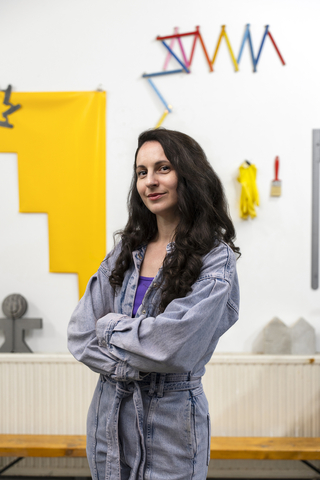
In my large-scale installations, which often evoke the world of playgrounds, I explore artistic ways to address the dilemmas of adulthood. For me, play serves both as a formal inspiration and a conceptual aid—a symbolic tool capable of representing complex processes and relationships in an elemental way.
Thematically, my work focuses on the existential, psychological, and social challenges faced by my generation. I approach these issues based on personal experience, using the conceptual toolset and structural approach of social sciences. I am equally concerned with broader systemic issues—such as the state of public education, the housing crisis, or questions of social mobility—and with the individual’s coping strategies and psychological responses to them, such as burnout, quarter-life crisis, rootlessness, and the sense of instability. My artistic practice takes shape at the intersection of personal experience and social reality, offering a sensitive response to the systemic forces that define individual life paths.
Meanwhile, I complement my conceptual thinking with conscious formal experimentation; the dynamic of context-dependent meaning-making is essential to me. I deliberately explore the potential of transformation—both physical and symbolic. The concept of play provides a framework for this, through which complex processes can be articulated in an elemental visual language. It expands the intellectual and formal boundaries of a given work, turning the elements into repositionable components of a continuously growing game set—or set of symbols.
I am a doctoral candidate at the Hungarian University of Fine Arts, researching how the role of meaning-making has changed in the artistic practices of Hungarian Generation Y artists.
Dániel Szalai
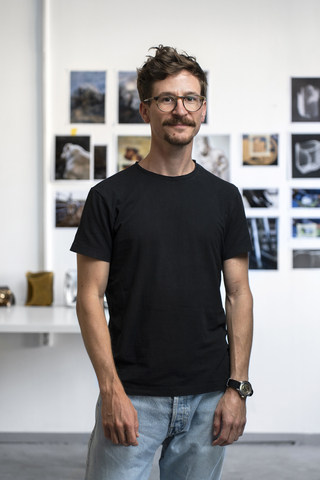
As a visual artist, I have been focusing on animals since 2017. Drawing on animal studies, critical posthumanism, and feminist theory among others, I investigate human-animal relationships as a lens to examine biopolitical, societal, and ecological issues.
According to the Viennese philosopher Fahim Amir, “Encounters with otherness in which one develops a curiosity and looks back seriously are starting points for rethinking one’s own way of being and the constitution of the world”. As an artist, I seek to create opportunities for such encounters by turning my gaze toward naturalised others, particularly animals. Domesticated animals play a central role in my work due to our shared technobiopolitical reality, which evokes a sense of empathy and identification in me. By examining how we treat domesticated animals, I seek not only to address our relationship with nature but also to question what it means to be subjected to human systems of control, and in doing so, to question the status quo.
Over the past few years, I have been focusing on intensive dairy farming and precision agriculture following a research-based approach. Using cattle as both symbol and subject, I explore how capitalism exploits the reproductive capacities and metabolic work of nonhuman animals, mostly female, for its own ends. In 2022, I began working with bulls which marked a shift toward a more internally driven and intuitive artistic practice. Inspired also by the metaphorical figure of the Minotaur, I am currently exploring themes of containment, agency, and masculinity while experimenting with new materials and embracing more ambiguous modes of expression.
Portrait photos: Zsuzsi Simon
